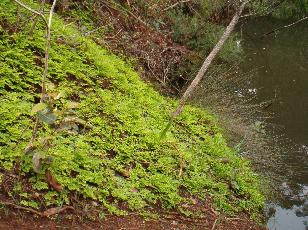A.C.N. 009 398 672
Frame sets for topics
Broadway Nedlands
Perth WA 6009
Tel (08) 93868340
- Netwiz Home
- MonTel
- Software
- MonTel and other software downloads
- Downloads for MonTel customer sites ►
- Time Zone Utility - TZUtil ►
- Free Tools for AuthorIt ►
- Telephone Extension List ►
- Support
- Contacts
- About Netwiz
Netwiz Pty Ltd Privacy Policy and Digital Signature.
This web site last updated:
2012-07-26.
For problems, comments and issues about this site please E-mail the Netwiz Web Master: webmaster @netwiz.com.au.
© 1997-2010 Netwiz Pty Ltd.
Frame Sets for topics (FSetop)
Topic last modified:2008-06-10
How FSetop works
Maiden hair fern, Margaret River Western Australia. |
Fsetop generates a frame-set for each topic based on a reference frame set which can be the frame set topic supplied by AuthorIt, which is by default located in: "C:\Program Files\AuthorIT V4\Data\Templates\CGI FTS\html_frameset.htm".
The frame set for each topic shares the same name as the topic except for an 'i' (short of index) prefixed to the name. The 'i' is short for index, and these frame sets are called index topics. The reason for the reference to index, is that each index topic now behaves like index.htm does for the first page of the HTML publication. By specifying i1234.htm rather than 1234.htm, your users will open the complete frame set, with the table of contents open at the correct place, and they will be able to book mark the page for future reference.
For example in the application notes on the Netwiz web site you can go directly to a topic frame-set that opens the table of contents (TOC) at the correct place http://www.netwiz.com.au/appnotes/i3205.htm.
...But wait there is more! ![]()
Bread crumb navigation
Fsetop can now add bread crumb navigation to your AuthorIt! HTML pages. To do this you will need to have a custom template for your topics.
What is bread crumb navigation ? See http://psychology.wichita.edu/ surl/usabilitynews/52/ breadcrumb.htm for a good introduction.
See http://www.author-it.com/kc/index.mv?3660 for details on how incorporate a custom template into Authorit!.
In addition to <pagetitle> <aitdata> for author generated information inside the custom template, you can now add <bread> to add bread crumb navigation from FSeTop. When you run FSeTop it will search the topic for the first occurrence of <bread> and replace it with the bread crumb code. Generally, you would want to place this above the authorit code, and below the top of page inside the <body> of the template. FseTop generates horizontal breadcrumbs which are used by 95% of web sites1. By inserting your own html code (see the -bu switch) you could change this to vertical or any other type you wanted.
And on top of that there are panels.
In fact the panels are actually either side and on the bottom (on this page at least). Since these are included in one html file on out put are are not part of a frame, they are called panels rather than panes.
They are used on this page! This page was developed in Authorit, and the centre frame underneath the bread crumb line was produced as one topic. The panel to right was developed as a two separate topics, and linked in two panels. Likewise the grey bar below.
To add panels (up to nine of them), place <panel1> through <panel9> in the custom template where you want the pages to appear. If you are using AuthorIt to generate those panels you will need to create another custom template (and appropriate topic template in AuthorIt) with <aitdata> as the only content. This will prevent the generation of the unnecessary header information for the panel topic.
Run FSeTop with -p1FileName, -p2FileName, -p3FileName et al switches where the file names are the panels to be inserted.
And now, menus using only CSS (Javascript free!)
FSetop (version 2.2) can now parse the TOC file to generate an unordered list, that is UL and LI HTML elements as a tree that reflects the menu generated by AuthorIt. A style sheet is then used to turn this list into a drop down menu system. While untested, it should be possible to create a stylesheet that allows a flyout menu, thus removing the need for frames altogether, though at the expense of larger pages.
1 http://www.webdesignpractices.com/navigation/breadcrumb.html
|
See Also |
In this section |
Are you up-to-date ? The latest is MonTel release 2.12.30. Remember, there are free MonTel updates for customers on current maintenance plans.
 live
live 

